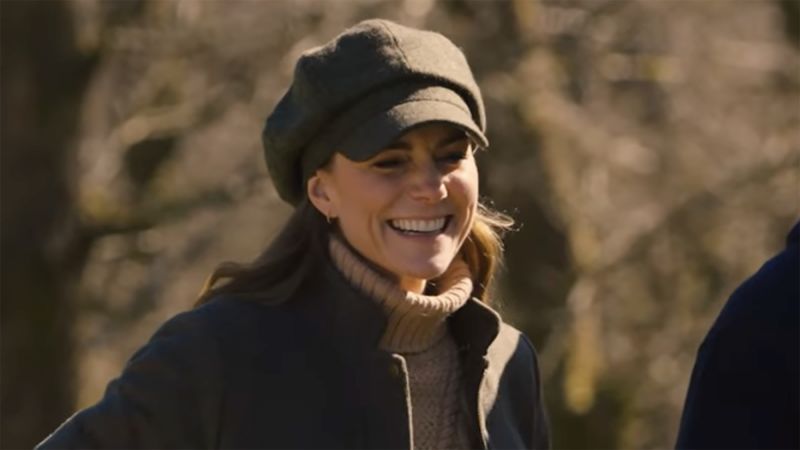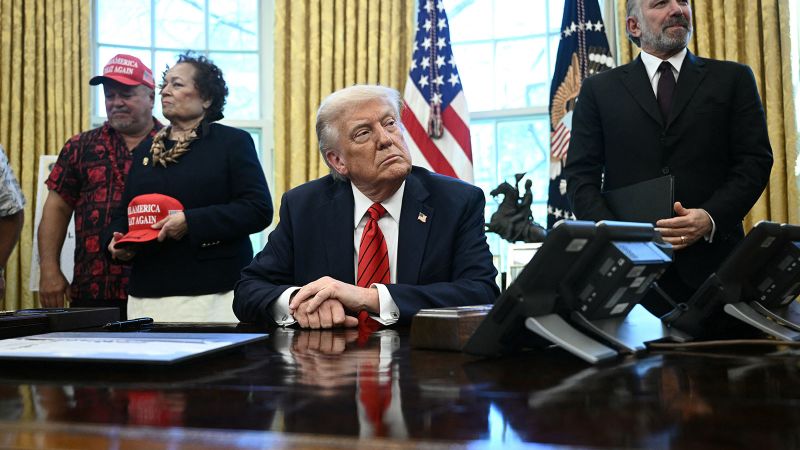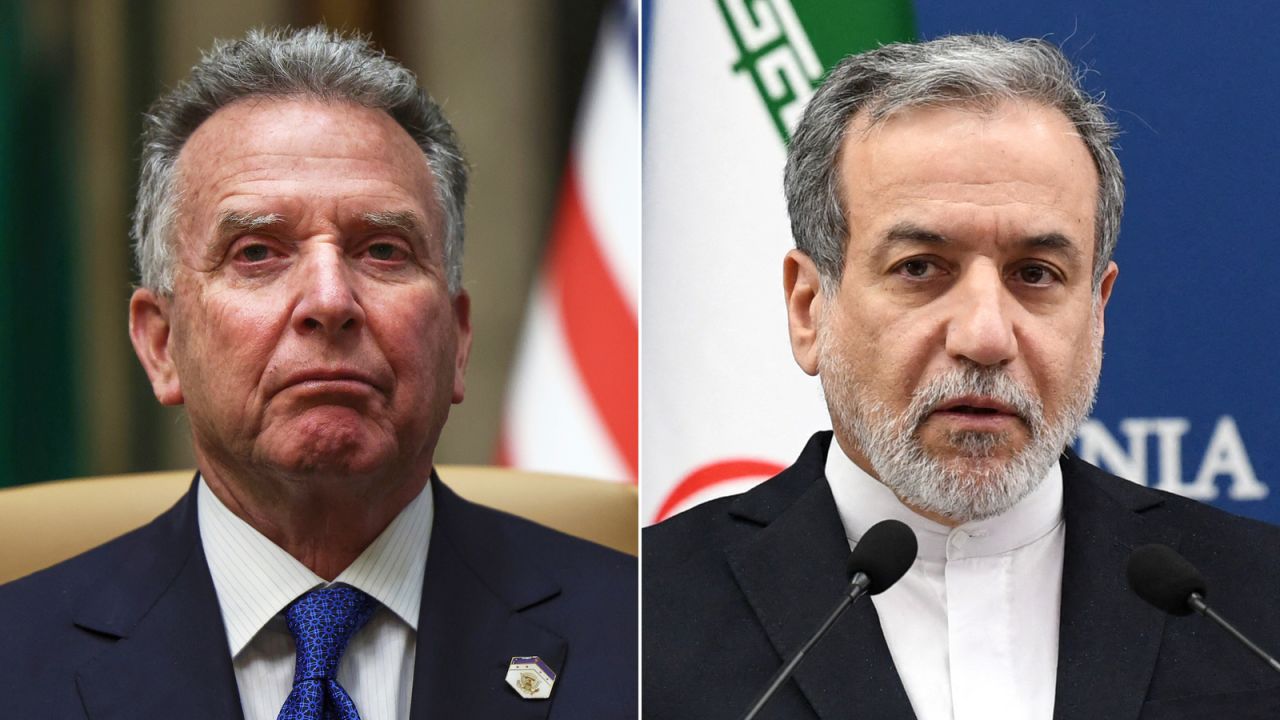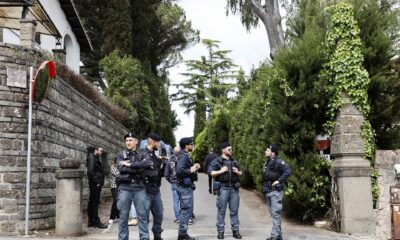Editor’s Note: Featuring the good, the bad and the ugly, ‘Look of the Week’ is a regular series dedicated to unpacking the most talked about outfit of the last seven days.
London
CNN
—
On a trip to the English countryside, Catherine, Princess of Wales, signaled that the Y2K style revival — which has resurrected both Ugg boots and wearing dresses over pants — is still in full swing.
In a short film released by the palace on Monday, the princess is seen sporting a puffy dark green baker boy hat as she joined a group of Scouts for an outing in England’s Lake District last month.
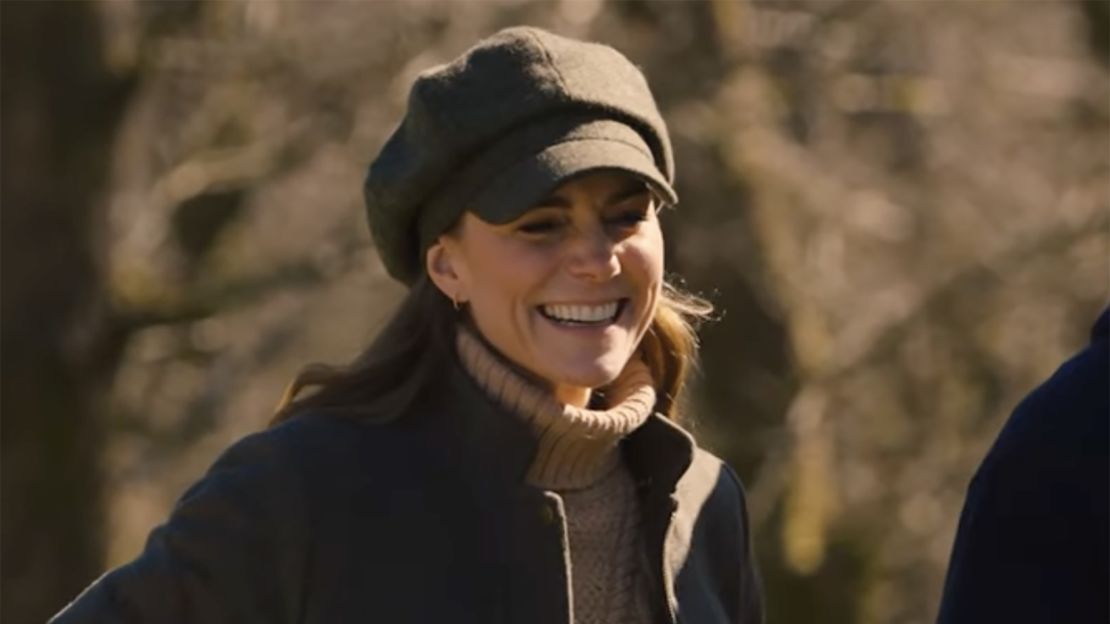
The baker boy hat (also called a newsboy cap) was a staple of ’90s and early ’00s fashion. Jennifer Lopez matched hers with a pink tracksuit, Britney Spears’ collection included variations in blue denim and pink leather, and Anne Hathaway wore a tweed version in “The Devil Wears Prada” following her fashionable on-screen makeover.
This isn’t Kate’s first time rocking the iconic noughties look — in fact, it appears to be her go-to when visiting the Scouts. Back in 2013, the then-Duchess of Cambridge wore a similarly small-brimmed, puffy style to join the youth organization for a volunteer training day.

Despite its name, the hats were not exclusively worn by bakers. The style’s humble beginnings instead date back to 1571, when England’s parliament passed a law requiring all working-class men to wear woolen hats on Sundays and holidays, or risk a fine, according to British hatmaker Hicks & Brown. The caps proved popular with dockworkers, shipwrights and bandits, and, over time, the baker boy hat became synonymous with the newsboy cap (which was actually worn by boys working at newsstands).
Though Kate’s choice of headgear has been called “divisive” by Vogue and a “Dickensian fashion moment” by Elle Australia, she’s in good company: Kendall Jenner was spotted walking the streets of New York City in a baker boy hat earlier this year and Anne Hathaway opted for the throwback look in Paris in 2023.

Never one to shy away from an outfit repeat, the Princess of Wales also appeared to sport the exact jacket she wore in the controversial edited family photo amid speculation about her health following abdominal surgery last year (she subsequently revealed her cancer diagnosis a few weeks later). In the latest video, she matched the green bomber with a cozy camel-knit sweater and a classic pair of skinny jeans. matched the green bomber with a cozy camel-knit sweater and a classic pair of skinny jeans.
The princess, who has served as joint president of the UK’s Scouts association since 2020, wore the ensemble for her walk with a group of Scouts aged between 10 and 15 near the shores of Lake Windermere in northwest England.
“I find it a very spiritual and very intense emotional reconnection,” she said, describing her relationship with nature in a short film about the excursion. “It is so therefore meaningful to me as a place to balance and find a sort of sense of peace and reconnection in what is otherwise a very busy world.”

